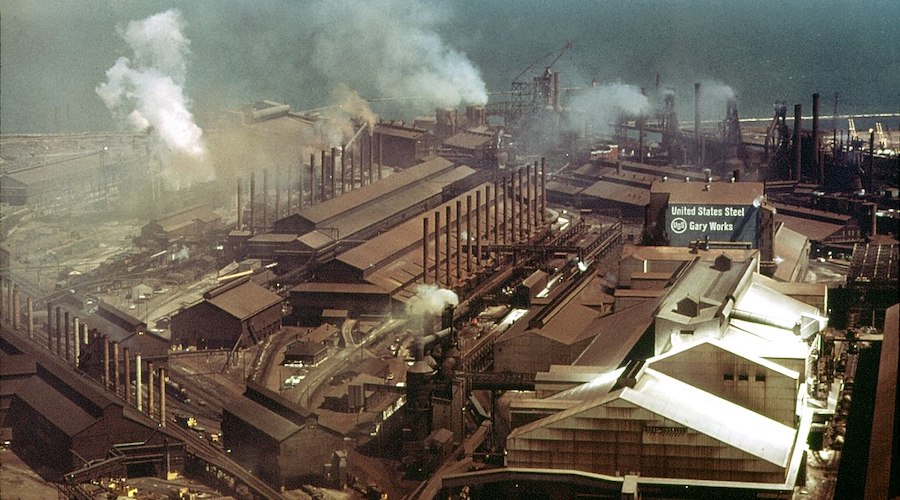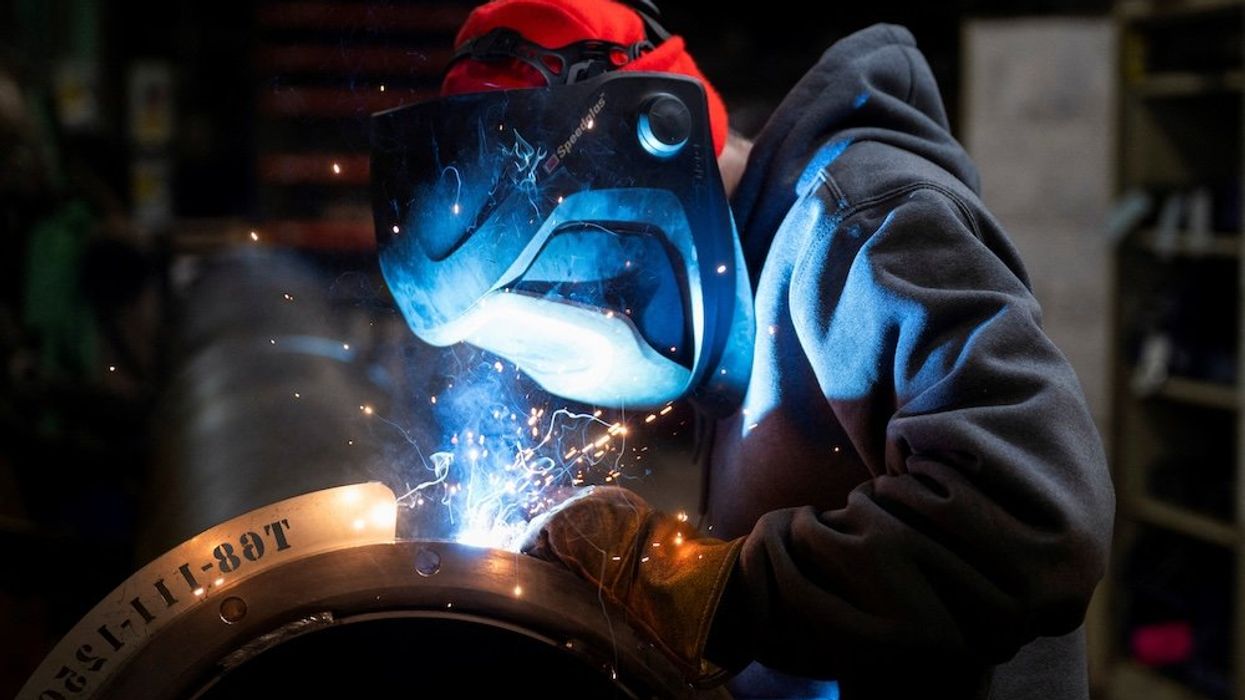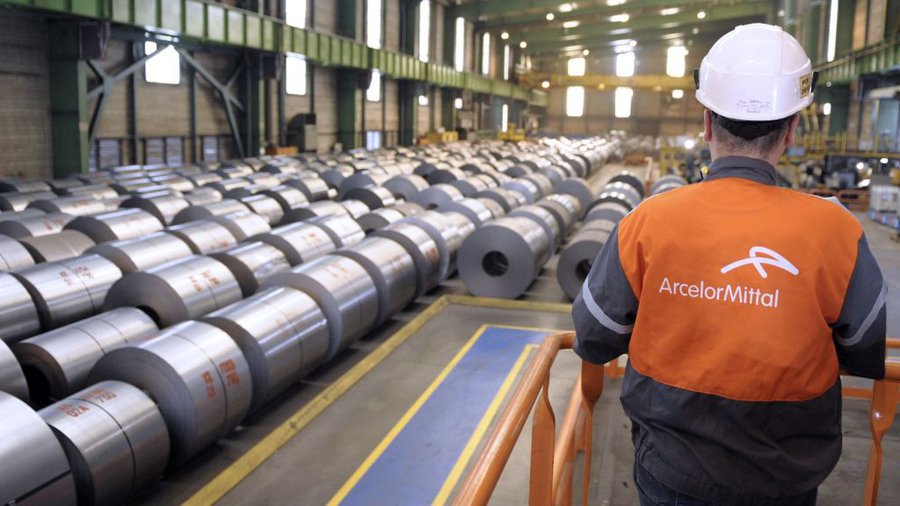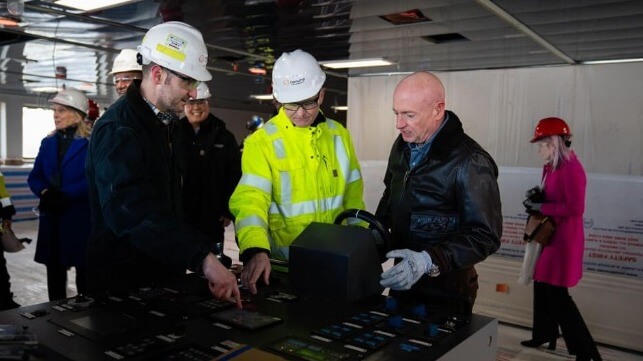U.S. President Donald Trump’s on-again, off-again trade wars have revealed the limits of international solidarity by U.S. based unions, especially the Teamsters, to their counterparts in Canada.
The institutional links between U.S. and Canadian unions are more intimate than almost any of the trade union movements in the world. Many affiliates of the Canadian Labour Congress and the AFL-CIO in the United States, as well as unions like the Teamsters that are not members of the AFL-CIO, claim to be “international unions.” Yet, from the U.S. side of the border, this “internationalism” is more rhetorical than meaningful.
Many U.S. union members may refer to their national union offices as the “International,” but what this largely means is that aside from a handful of affiliated local unions in Canada, the unions have locals in Puerto Rico and other American colonies. Some of the big U.S.-based industrial unions, such as the Steelworkers do have a substantial presence in Canada. While they have called for Canada to be “exempt” from any tariffs but not Mexico.
The Teamsters Canada has a smaller presence but has around 140,000 in a wide variety of industries mirroring the U.S. Teamsters. Major logistics employers such as UPS and Rail are represented by Teamsters Canada, but others, such as DHL are represented by Unifor in Canada. T-Force Freight, formerly UPS Freight represented by the Teamsters, was sold to the Montreal based TFI International a few years ago. There are few, if any, cross-border contracts, so there are few opportunities for joint contract campaigns or strikes.
Tensions between U.S.-based unions and their Canadian affiliates, notably in the case of the autoworkers, exploded into public view. Jim Stanford, director of the Centre for Future Work, a labor economics think tank and a former economist in the Research Department at Unifor (and previously with the Canadian Auto Workers), wrote a few years ago:
For the first half-century of industrial unionism, unionized Canadian autoworkers belonged to the UAW, which included workers at the Canadian plants of GM, Ford, Chrysler, and then American Motors (eventually acquired by Chrysler) beginning in the 1930s. But after years of tension over strategy (reflected in the Canadians’ opposition to wage concessions, profit-sharing schemes, and two-tier wages), the Canadian branch of the UAW split away to form the Canadian Auto Workers (CAW) in 1985. At the time, the UAW had about 1.2 million members, one-tenth (120,000) of whom belonged to its Canadian branch.
The Detroit-based leadership of the UAW — ironically headquartered at “Solidarity House” — gave little option to the Canadians led by Bob White to breakaway after years of concessions and plant closings without a fight. They eventually formed the Canadian Auto Workers Union (CAW). Solidarity House could do little about it.
The SEIU, considered a “progressive union” for many years, has practiced trade union colonialism in Puerto Rico and exercised repressive trusteeshipsagainst its local affiliates in Canada that disagree with its policies. The Teamsters practice their own colonialism in Puerto Rico, where Local 901 is affiliated with and subject to the discipline of the New York City-based Joint Council 16, which seems pretty far from Puerto Rico.
Teamsters Canada
The Canadian Conference of Teamsters was founded in 1976, later it renamed itself Teamsters Canada. The Teamster magazine reported at the time, “More than 100 hundred representatives of Canadian local unions were participants [on] March 9, 1976 in Toronto at the Founding Conference.” Also present were the Teamsters’ top leaders, General President Frank Fitzsimmons and General Secretary-Treasurer Ray Schoessling. Tensions between the Canadian and U.S. Teamsters over the years were largely contained by granting of autonomy to the Canadians formalized at the 2001 Teamster convention.
However, the autonomy of the Teamsters Canada had the unintended effect of turning them into an insular fiefdom ruled by a crew of old guard officials. There had been a vibrant reform movement centered in British Columbia whose most prominent activist was Diana Kilmury, a construction driver in Teamsters Local 213, beginning in the 1970s. Kilmury would go on to be the first woman elected to the General Executive Board of the Teamsters in 1991 and re-elected in 1996 on the Ron Carey slate. A reform movement in other Canadian Teamsters locals didn’t get off the ground.
Today, Teamsters Canada is led by François Laporte, who was elected president in 2015, as well as being an International Vice-President. LaPorte is an old guard figure who supported James P. Hoffa, Jr., the previous leader of the Teamsters, and ran on the winning O’Brien-Zuckerman Teamsters United slate in 2021. Yet, the Teamsters Canada are in a different country and operate in a different labor movement that is now the subject of menacing threats of annexation and economic ruin from U.S. President Donald Trump, who is supported by Sean O’Brien.
LaPorte responded to Trump’s threats:
While millions of Americans struggle with exorbitant medical costs and lack of affordable insurance, Canada has a universal healthcare system that ensures every citizen has access to medical care without the fear of financial ruin. Canada also consistently ranks among the most educated countries in the world, having a higher percentage of college and university graduates than our southern neighbour.
Workers in Canada benefit from stronger labour protections, including paid parental leave, mandatory vacation and sick leave. Our country is officially bilingual, recognizing both English and French as official languages, reflecting our diverse heritage and reinforcing our unique cultural identity.
Canada also has a strong social safety net that provides employment insurance, affordable postsecondary education, childcare and pension plans that help ensure financial security for retirees. While both countries are diverse, Canada takes pride in its commitment to multiculturalism, not just as an ideal but as a fundamental part of our national identity.
And, finally:
Donald Trump’s threats aren’t just geopolitical posturing. They are a direct attack on Canadian values and families who depend on jobs in transportation, manufacturing, and agriculture. A 25% tariff could have severe impacts on the lives of hardworking Canadians and Americans. Canadian Teamsters, like other unions across the country, have always fought to defend Canadian jobs, and we will continue to do so.
LaPorte made some important points, but glossed over the fraying Canadian welfare state, including its woefully underfunded healthcare system, and the longstanding bigotry directed at French-speaking Canadians, and the indigenous the peoples of its First Nations. Yet, there are important differences between the U.S. and Canada that has driven figures on the U.S. Right to froth at the mouth. Tucker Carlson, Trump’s best-known public advocate and the host one of Sean O’Brien’s favorite venues, said:
First of all, anybody with any ambition at all, or intelligence, has left Canada and is now living in New York. Second, anybody who sides with Canada internationally in a debate between the U.S. and Canada, say, Belgium, is somebody whose opinion we shouldn’t care about in the first place. Third, Canada is a sweet country. It is like your retarded cousin you see at Thanksgiving and sort of pat on the head. You know, he’s nice, but you don’t take him seriously. That’s Canada.
Meanwhile, the Teamsters led by Trump supporter Sean O’Brien have said nothing in response to Trump’s threats against Canada. What is the point of Canadian Teamsters being in this “International” union, if O’Brien is complicit in Trump’s mad schemes? O’Brien promotes T-shirts to his membership emblazoned with the slogan: “Teamsters vs. Everybody.” Such an insular perspective in a world that demands global solidarity will lead to disaster.











